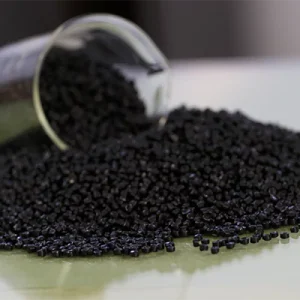MB
Masterbatch and Compound: A Comprehensive Guide for Buyers
Introduction:
Masterbatch and compound are two types of additives that are widely used in the plastics industry to modify the properties of polymers and improve their performance. In this article, we will provide a comprehensive overview of these two materials, their advantages and disadvantages, and how to choose the right one for your application.
What is Masterbatch?
Masterbatch is a concentrated mixture of colorants, additives, and a carrier resin that is added to a base polymer to modify its properties. Masterbatches are typically added at 2.5 to 3% to the polymer and can be used to create a wide range of changes in the polymer’s properties, including color, transparency, impact resistance, UV resistance, flame retardant properties, and more.
Advantages of using Masterbatch:

- Ease of use: Masterbatches are easy to add to the base polymer and do not require complex processes or specialized equipment.
- Uniformity: Masterbatches are completely mixed with the base polymer, ensuring a uniform distribution of colorants and additives throughout the final product.
- Cost savings: Using masterbatches can significantly reduce production costs because only one material is needed instead of using multiple additives separately.
Disadvantages of using Masterbatch:
- Limited color variety: Masterbatches are typically available in a limited range of colors.
- Limited properties: Masterbatches may not be able to provide all the desired properties for a particular application.
What is Compound? MB
A compound is a mixture of two or more polymers that are combined with additives such as colorants, fillers, and stabilizers to create a new material with desired properties. Compounds can be used to improve various properties of polymers such as strength, hardness, flexibility, heat resistance, chemical resistance, and more.
Advantages of using Compound:
- Versatility: Compounds can be designed for a wide range of applications with different properties and performance.
- High performance: Compounds can significantly improve the properties of polymers and enhance their performance in various applications.
- Cost reduction: Using compounds can generally reduce production costs because only one material is needed instead of using multiple polymers and additives separately.
Disadvantages of using Compound:

MB
- Price: Compounds are generally more expensive than masterbatches.
- Complexity: The production of compounds requires more complex processes and specialized equipment.
Choosing between Masterbatch and Compound:
The choice between masterbatch and compound depends on various factors such as the type of base polymer, the desired properties for the final product, the production volume, and your budget.
- If you are looking for a simple and cost-effective solution to change the color or add a few additives to the polymer, masterbatch is a more suitable option.
- If you are looking for a specialized solution to enhance the polymer properties and create a high-performance product, compound is a more suitable option.

(mb) Masterbatch and Compound
Play crucial roles in various industries,
serving as essential components in the manufacturing of plastics and rubber products.
Masterbatch,
a concentrated mixture of pigments and additives,
is widely used to impart color, enhance properties,
and improve processing efficiency in plastic products.
MB(Compounds),
on the other hand,
involve blending polymers with additives to create customized materials
with specific characteristics, such as increased strength or flame resistance.
These versatile solutions find applications in sectors ranging from automotive and packaging to electronics,
offering manufacturers the flexibility to tailor materials to meet diverse performance requirements,
ultimately contributing to the innovation and functionality of end products.
Artificial Intelligence in the Plastics Industry: Opportunities and Challenges
Artificial intelligence (AI) is rapidly becoming a powerful tool in the plastics industry. AI can be used to improve manufacturing processes, increase efficiency, reduce waste, and develop new materials and products.
Some of the opportunities for using AI in the plastics industry include:
- Optimizing manufacturing processes: AI can be used to monitor and control manufacturing processes in real time. This can help identify and solve problems faster and more efficiently.
- Predicting defects: AI can be used to predict potential defects in plastic products. This can help manufacturers prevent the production of defective products and reduce waste.
- Developing new materials: AI can be used to design and develop new plastic materials with advanced properties and performance.
- Marketing and sales: AI can be used to analyze customer data and identify new market opportunities.
However, there are also challenges associated with the use of AI in the plastics industry:

Mb
- High initial costs: Implementing AI systems can be expensive.
- Need for a skilled workforce: Using AI effectively requires a skilled workforce with the necessary expertise.
- Ethical and security considerations: The use of AI can raise concerns about ethics and security.
Despite these challenges, AI has the potential to transform the plastics industry. By using AI, plastics manufacturers can significantly increase their efficiency, quality, and sustainability.
In this article, we will provide a comprehensive overview of the applications of AI in the plastics industry, the advantages and challenges of using AI, and examples of successful AI applications in plastics companies.








